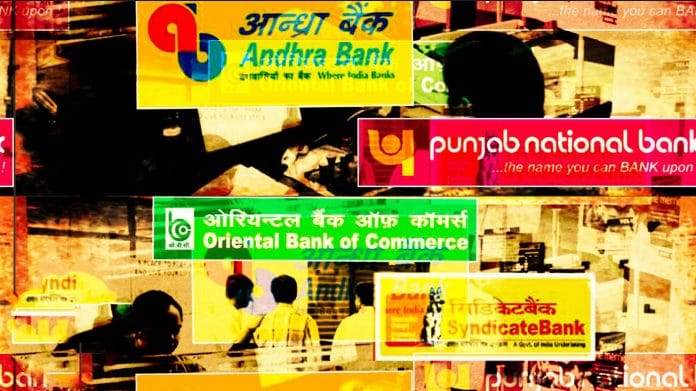With every passing day, India’s economic indicators are turning a little bleaker. The situation is bad enough to warrant using the word “crisis,” arriving just as the government’s fiscal ammunition is spent.
The announcement Friday of 5% GDP growth in the June quarter showed the economy growing at its weakest pace in six years. On Sunday, the top six carmakers reported a 29% drop in August sales, stoking fears that the slowdown could get still worse. The 982 billion rupees ($13.7 billion) collected in August via the goods and services tax, the main tax on consumption, was the smallest in six months.
This adds pressure on the central bank — both to cut its policy rate and to ensure that commercial lenders pass them on to borrowers. To the extent that the more inefficient state-run banks are a drag on credit, New Delhi said Friday that as many as 10 of them will be merged into four.
Whether folding one weak bank into another will make the combined entity any stronger remains to be seen. What’s clearer is that these lenders will spend the next six months on integration. Putting their balance sheets to work may take a backseat. Pending consolidation, the lenders might also be hesitant to issue new bank guarantees, especially to private-sector bidders for road projects. Thus, one of the few areas where there’s new investment may be affected, especially with a sharp rise in debt levels of the government agency that gives out the contracts.
A hefty injection of 552.5 billion rupees of taxpayers’ money into the merged banks will only help them provide for the bad loans that will get lumped together. Capital for growth remains elusive. State Bank of India, the largest lender, will require 150 billion rupees in the current fiscal year, according to ICRA Ltd., an affiliate of Moody’s Investors Service.
The benefits will only be evident in a few years. The new round of consolidation will bring down the number of state-run banks to 12 from 27 just a few years ago. These lenders will have no choice but to become more competitive because they’ll have to price consumer loans by linking them to the central bank’s policy rate. Since they aren’t very good at lending against cash flows, the government wants them to originate loans together with non-bank financiers. Currently, even the shadow banks are stressed. Over time, though, this should help boost the underwriting standards of state-controlled lenders. Credit flows to smaller firms, which supply goods and services to larger companies, will improve.
Making the most of vendor finance will require plugging India into global supply chains first. By offering the likes of Apple Inc. and Ikea less restrictive access to its billion-plus population, New Delhi is hoping for long-term sourcing wins from the rapidly deteriorating trade relations between Washington and Beijing.
But while taking much-neglected steps to position India as an alternative to China is a welcome move, the gains won’t be immediate. Before committing to a new factory in India to both sell locally and to export, investors will want to see steadier final demand in the domestic economy. Maruti Suzuki Ltd., the nation’s biggest carmaker, is struggling to push out 100,000 cars in a month to dealers ahead of the festival season. That isn’t exactly a great advertisement to dangle before new entrants.
Also read: Modi govt’s bank bailouts seen distracting focus from growth slump
Good things will come from all the tinkering – just not now. Weakening global growth means India can’t even use a weak currency to export its way out of trouble. This isn’t the time to talk loudly about wanting to become the next China. A hawkish Washington won’t want to see mercantile strategies being deployed by yet another large labor-surplus nation.
Prime Minister Narendra Modi’s best hope will be to use the crisis to mend his government’s frayed relationship with the private sector. Giving startups a reprieve from a seven-year-old law, one that was used by tax authorities to harass them with impunity, is a good move.
Admitting that there are design flaws in the consumption tax and fixing them — perhaps by bringing separately taxed petroleum products into its ambit — should be the next step. Like with the bank mergers, the gains will take time time to become evident, even as the pain gets visibly worse. -Bloomberg
Also read: India’s growth forecasts being lowered, more interest rate cuts predicted







Modi curses Nehru and then follows exactly his policies.
Bank mergers are no solution. This is not even a placebo, it’s actually nothing, just diverting attention from real solutions. As long as we have ‘socialist’governments, that believe the tax payer is a milch cow, not much can be expected.
Whatever medication will help a seriously ailing patient, merging weak PSBs with ( relatively ) strong ones or rate cuts by a deferential RBI are mere placebos.